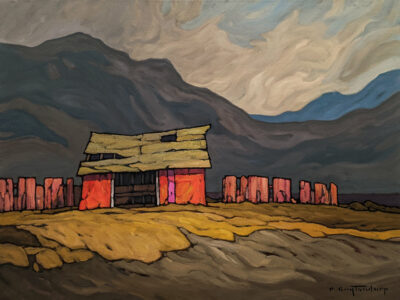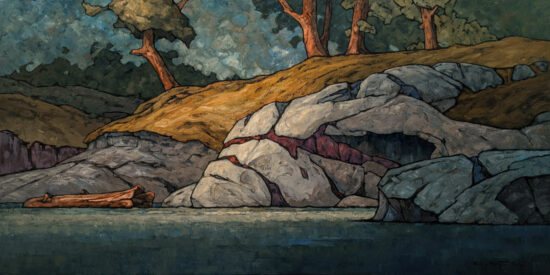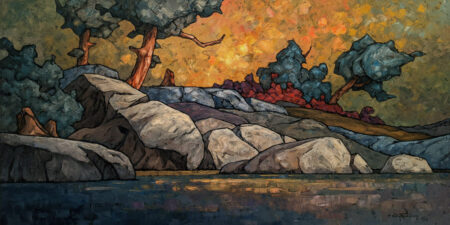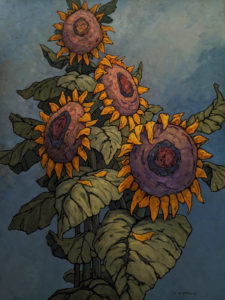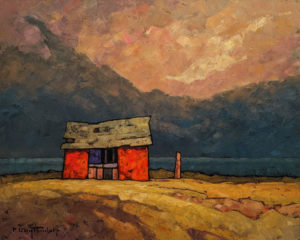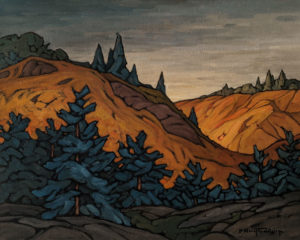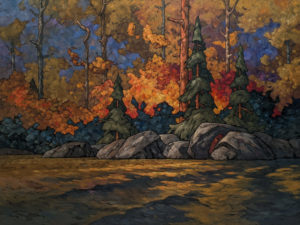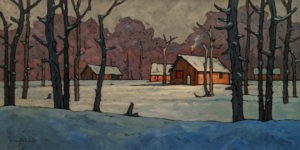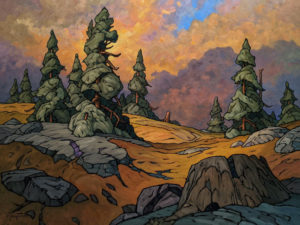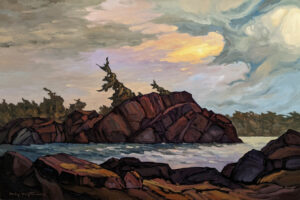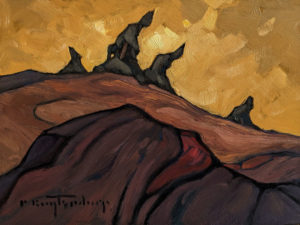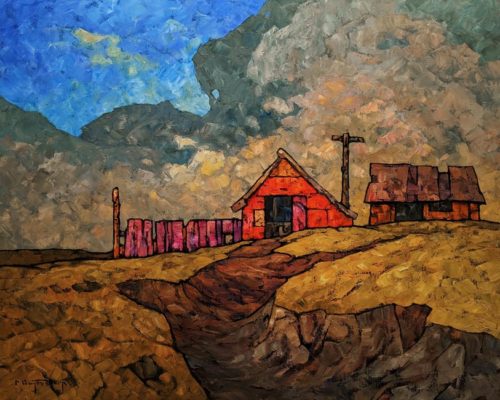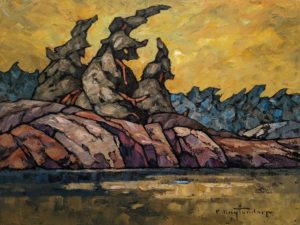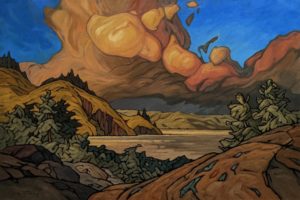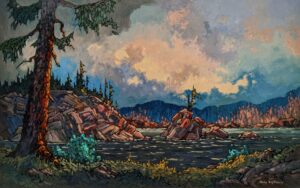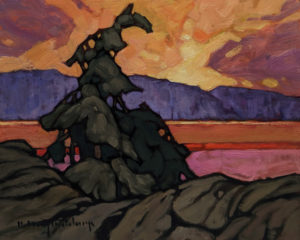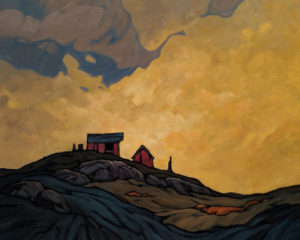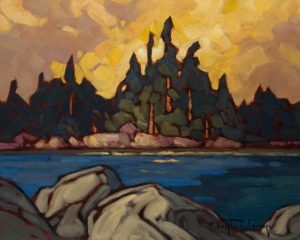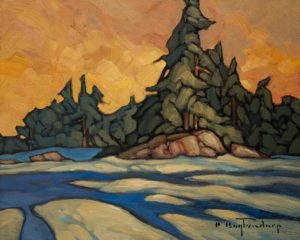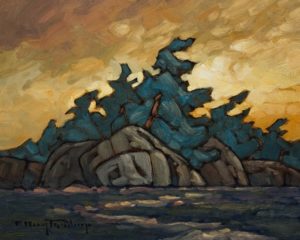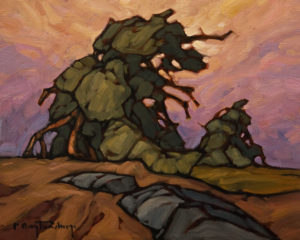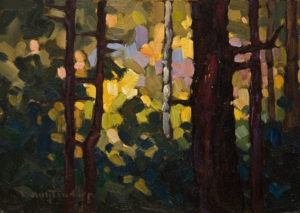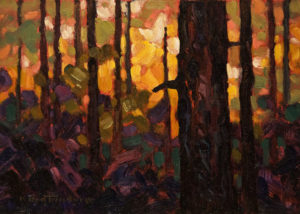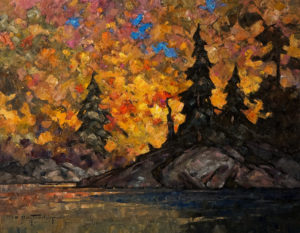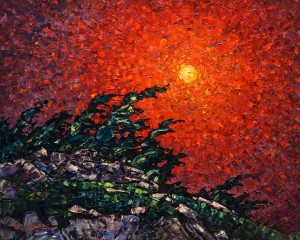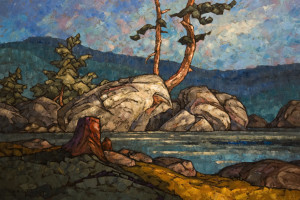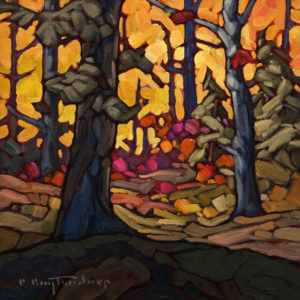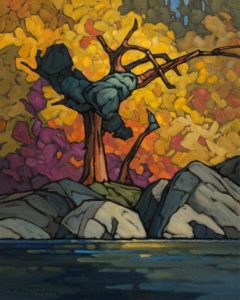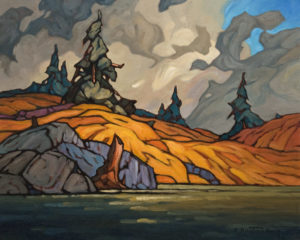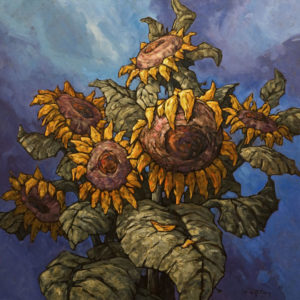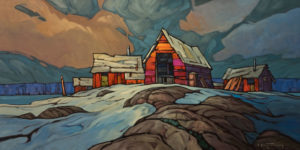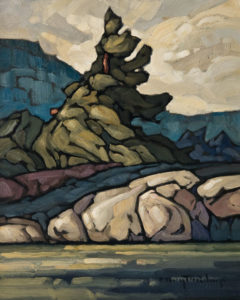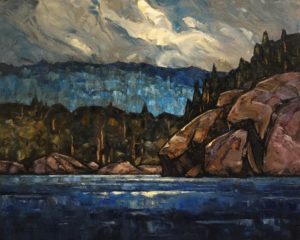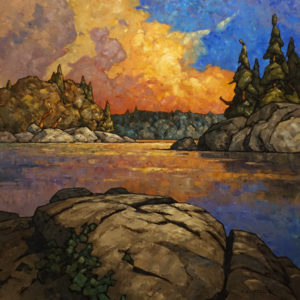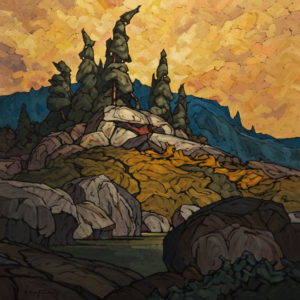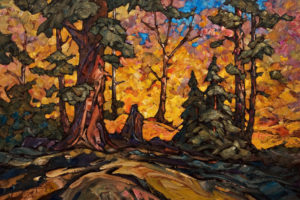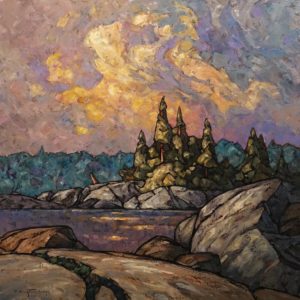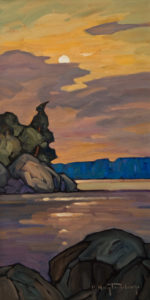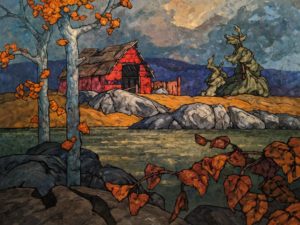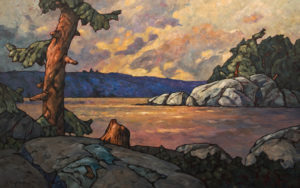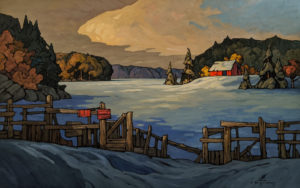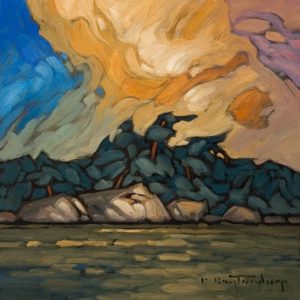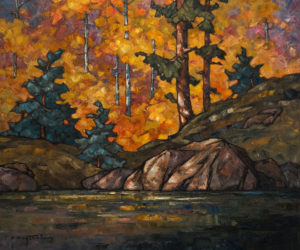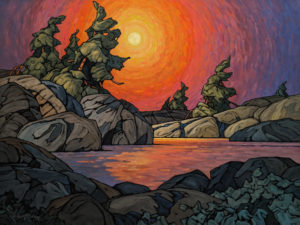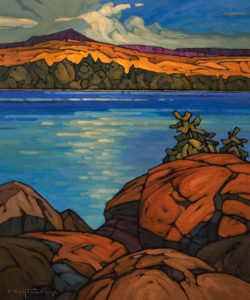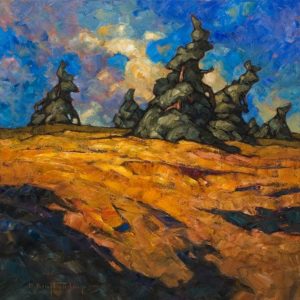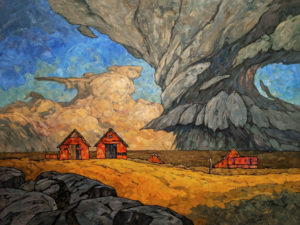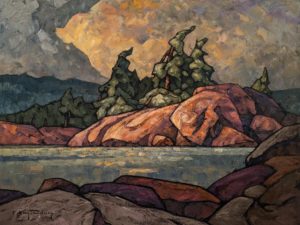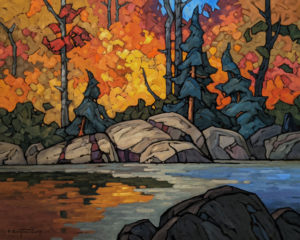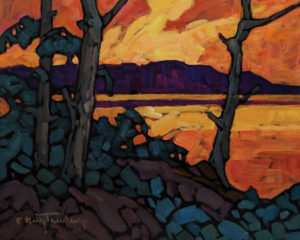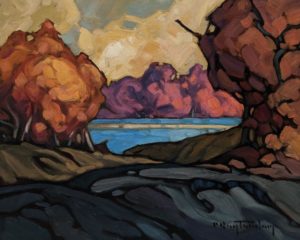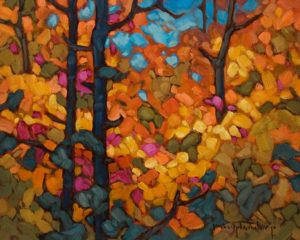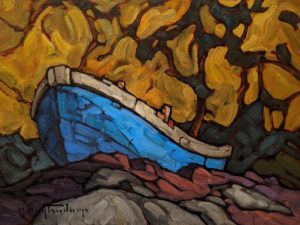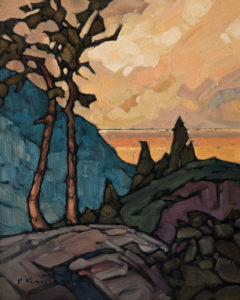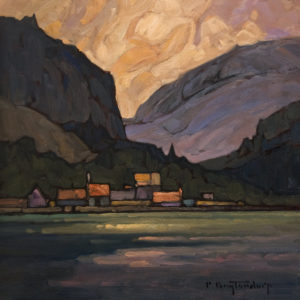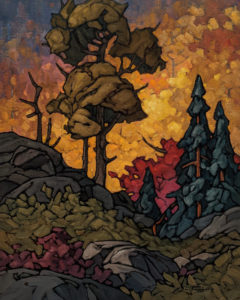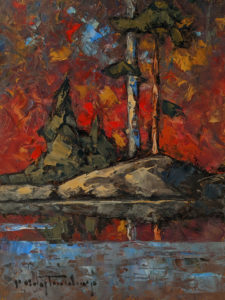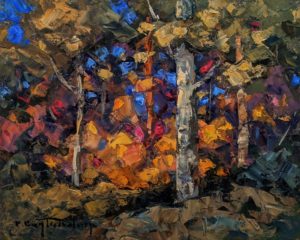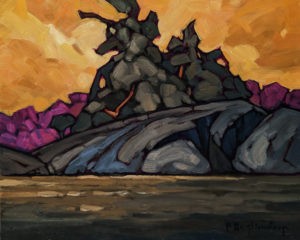
Article by Alex Browne
Peace Arch News (Oct. 13, 2001)
Courtesy of the publisher
Reaching for the Sky: Buytendorp’s latest embraces expected, and unexpected
Some revel in landscapes that are tranquil and predictable. Others prefer scenes that provide evocative stimulus.
It’s clearly the latter breed of collector that has kept painter Phil Buytendorp busy since he decided to jettison the building trades and concentrate on his art full-time in 1997.
Many of Buytendorp’s best landscapes seem to exist on the edge of a storm, where wind whips trees and sends clouds scudding across the skies to form almost surreal shapes and vistas.
And while the paintings in Buytendorp’s upcoming one-man show at White Rock Gallery feature some tranquil scenes and atypical subject matter, he’s quick to admit he enjoys the play of light and shade that is only found painting outside on blustery days.
“The skies can be crucial,” he said.
“If the sky changes, the light changes, and if the light changes you have a different subject on your hands.
“The sky has got a whole life of its own — it can set the mood but it doesn’t have to be a focal point, it doesn’t have to take away from the solidarity of the foreground.
“When you get out there in nature it can be a bit of a rollercoaster in what you see. You can have the foreboding of a cloud, or the magnificence of the sun breaking through. They can send you flying, emotionally.”
Buytendorp said his self-imposed discipline is to paint one thing at a time, to keep the ultimate statement simple.
“It’s knowing when a statement’s been made — the quiet is every bit as important as the music. It’s like Mozart’s Piano Concerto No. 24 — it’s perfect as it is. Any more music or instrumentation on top of it would be only noise.
“Not, mind you, that I’m comparing myself to Mozart,” he said, smiling.
Going through the paintings for his show, the genial Buytendorp throws out place names for his subjects. Some favourites are Tofino and Ucluelet, the Inside Passage and Gulf Islands and rough country at the north end of Stave Lake.
“Sometimes I find that where they’ve logged, there is some beauty there — you begin to see the lay of the land.”
Biggest departure in terms of subject matter (if not mood) are scenes he painted from a recent two-week trip to Algonquin Park in Ontario, stamping ground of the famed Group of Seven.
As a child, Buytendorp visited the park several times with his father George, with whom he still paints (he’s a third generation artist: both his father and grandfather were trained at the Academy of Fine Arts in the Hague, Netherlands).
“I love the work of the Group of Seven and I wanted to see the park again myself through the eyes of an artist,” he said.
“I wanted a lack of fear in the application of colours, and being there helps.”
Another feature, and departure, of the upcoming show is the inclusion of small panel paintings — including the first 5×7 pieces by Buytendorp offered for sale.
Each an exquisite small-scale statement incorporating his eye for composition and colour, the panels are actually an easier medium for Buytendorp to work with.
“The smaller size is helpful because I like to paint where there is rain, bugs and wind. The panels are transportable and I can log the colours pretty quickly onto them.
“When you get back to the studio you tend to settle down more. You’re not as daring, you wouldn’t put this colour next to that colour.
“Usually I clamp the panels to the easel — a canvas becomes like a kite in the wind.”
“Sometimes I finish the panels as little paintings; sometimes I throw them into the fireplace. Sometimes I work them into a large painting.”
Part of the challenge with larger paintings is keeping them as loose as smaller, on-site works.
“For something like that to succeed, you really have to have the small panel as a reference.”
The show holds plenty of evidence of Buytendorp challenging himself in other directions.
Some of his landscapes are stylized to emphasize mood and movement and others an almost mythic sense of the terrain. Others are relatively placid scenes, including softer snowscapes and autumnal studies and some close-up studies of old barns.
There are also florals and paintings employing palette knife.
“I like the ability to leave colours un-mixed. In one knife-stroke you can have three or four different colours at the same time.
“Some of the paintings suit the knife better; some paintings I sit and say ‘I want to play with the knife again’.
“Variety was something I was shooting for with this show, and I’m pretty happy with it. I was looking forward to coming in before the show and seeing all the work again.”
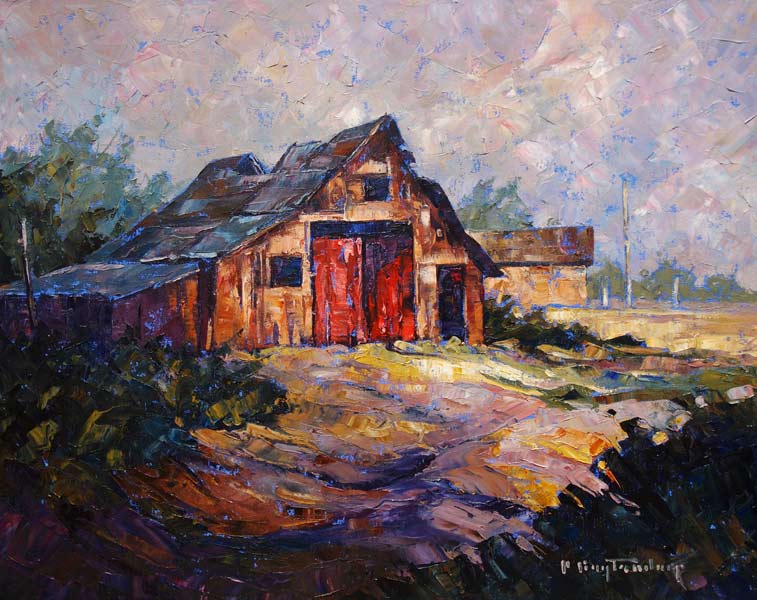
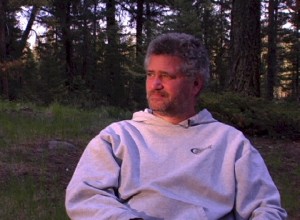 PHIL BUYTENDORP is an accomplished outdoorsman with a deep appreciation and love of the natural environment. Even at an early age, growing up in Manitoba in a family of respected artists, it was natural for him to depict these feelings on canvas. His west coast scenes, whether tranquil or stormy, are rendered in bold brush or knife strokes and rich colour palettes.
PHIL BUYTENDORP is an accomplished outdoorsman with a deep appreciation and love of the natural environment. Even at an early age, growing up in Manitoba in a family of respected artists, it was natural for him to depict these feelings on canvas. His west coast scenes, whether tranquil or stormy, are rendered in bold brush or knife strokes and rich colour palettes.
